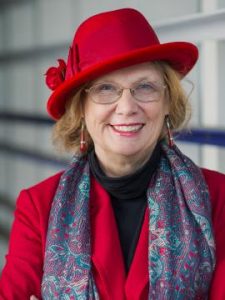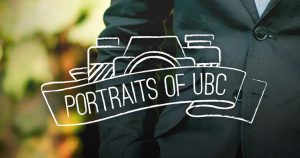Meet Neil Guppy: Using Sociology to support students
Sociology Department Head and Professor, Neil Guppy, believes in the power of student initiatives, especially Student Directed Seminars.
Guppy has been the Sociology Department Head for 4 years, in which he has worked to ensure the best possible experience for UBC students and faculty.
“My most important duties are hiring new faculty in conjunction with my colleagues, trying to provide a supportive environment for learning and research, and trying to represent the interests of sociology students and faculty, and the university more broadly,” he described. In addition, Guppy teaches several sections of Sociology 100, a popular first-year survey course.
During his UBC career, Guppy has had a hand in some of UBC’s most popular outlets for student engagement; including working with UBC’s unique first-year orientation, Imagine UBC, and helping to create the Student Directed Seminars (SDS) program.
Guppy coordinated the inaugural SDS program with former AMS president, Vivian Hoffmann. Hoffmann was interested in creating opportunities for students to lead learning. She based her proposal upon a program she witnessed while studying at the University of California, Berkley. Hoffmann brought her idea to Guppy, looking for support and guidance.
“She came to see me because I was the Associate Dean, and most responsible for student issues,” Guppy remembered. “She and I constructed and implemented what is now the SDS seminar.”
The SDS program is an extension of UBC’s Directed Studies program, which allows students to work one-on-one with a professor doing research in a narrow field. SDS courses are designed and directed by students with the assistance of a volunteer faculty member. The SDS Advisory Committee reviews and approves final course outlines before they are offered for registration. Guppy has served as chair on the SDS Advisory Committee for the past six years.
Proposed classes must be on a topic that is not offered at UBC, and have a minimum registration requirement of eight. Students in third year and above are encouraged to submit applications by the deadline. Past courses have included: Think Globally, Act Locally: Citizenship in Vancouver; Chick Lit: Making (Over) a Context; Lifting the Veil: Representations of Middle-Eastern Women; and Graphic Novels: Legitimizing the Genre. SDS courses can span across all faculties and departments.
“We did it as an alternative way for students to engage with topics that weren’t in the UBC curriculum.” Guppy said, explaining that students flourish when they are given the chance to pursue topics they are passionate about. “I believe it’s been tremendously successful. Students are very engaged with learning in the program.”
“My favourite example is the concluding workshop that students had in a hotel in the Downtown Eastside, where they had been exploring alternative ways of representing social change. It was just a very moving, very involved, very passionate three hours of presentation and debate and dialogue with 40 or 50 members of the Downtown Eastside community.”
“Like Imagine UBC, which I was also very involved with when it started, it happened because a student at the University had a really good idea and we were able to jointly implement it,” he said.
“Many of our students have had many good ideas and have been able to push and work them in ways that are beneficial to generations after them.”
By Meghan Roberts (BA 2008, English Literature and International Relations).
Meet Todd Handy: Integrating learning outside the classroom
Todd Handy is no stranger to working with students, both in and out of the classroom.
A UBC Psychology Professor, Handy interacts with students on daily basis. Director of the UBC Neuroimaging Lab and formally affiliated with the cognitive neuroscience lab, Handy likes working with undergraduate students in research positions because of the unique perspective they bring. He cites their “creative input” and inquisitive nature as assets to his lab environment. In addition, Handy enjoys seeing students become excited by the research they conduct; he remarks that “It’s reinforcing when you see students […] get charged up by issues and questions we’re pursuing.”
“I’ve really enjoyed being able to meet and understand and get to know students in ways you couldn’t in the classroom,” Handy said. “As a teacher I think it’s invaluable and helps understand the mindset of students and what they like and don’t like in classes.”
Heavily involved with students as a faculty mentor and co-chair of the former Faculty of Arts Academic Commuter Transition program, Handy took his teaching to the next level. FAACT was a UBC Peer Program that catered towards the distinct transition needs of first-year commuter students, and gives them a positive beginning to their UBC experience. He was open to collaborating with students, and when he first started, his hope was to meet with students and find out programs and activities that “might be interesting for them”. Key components of FAACT have now been integrated into ASTU 150.
According to Handy, working with students “helps me understand ways I can improve my teaching.” With a faculty member so involved in student life, it’s no wonder that his department won the 2009/2010 Alfred Scow Student Development Award.
By Meghan Roberts (BA 2008, English Literature and International Relations) and updated by Katie Fedosenko (BA 2011, English Literature)
[Photo Courtesy of CASS]
Meet Dr. Arlene Sindelar: Her Path to History
As an undergraduate at Concordia University Chicago, Dr. Arlene Sindelar studied math. She even taught math as a student teacher before graduating. But it was while student teaching that she made an interesting observation—she enjoyed studying math, she liked teaching math, but she didn’t really think much about math once she left the classroom. Instead, she thought about history. History had always captured her imagination and it was history that drew her back.
Capturing student life through UBC Portraits
There is no question that the UBC campus is recognized for its natural aesthetic beauty and appealing locale… but what do we know about the hundreds and thousands of students that walk across campus every day? First year student Rabi Sun has captured the student life in a unique and extraordinary way through his original project called UBC Portraits.
Rabi is a first year Arts student who has taken the art of photography and applied it to his university life in a creative way. For now, he is deciding between a major in Philosophy or International Relations.
Here is Rabi’s take on his life so far as an Arts student at UBC and a bit about his love for photography:
1. It shows that photography is a big passion of yours. What is your main inspiration?
My main inspiration for photography is mainly just the idea of being to capture memories and moments in time with a still image. I am a strong believer of the phrase: “a picture is worth a thousand words”. Maybe not a thousand words, but an image is able to say a lot about something.
2. Pictures do say a lot. So I’ve taken a look at UBC Portraits and found that it is very unique and shows our university in a different light. How did you come up with this particular project?
The way the project works is a very simple idea and has been done many times in various other countries. I came across a Youtube video where two photographers in Britain spent a weekend taking 1000 photos of people of all kind in London in order to show “the true face of Britain.” After my acceptance to UBC, I figured it would be a lot easier to work on the project on campus and a good way to keep my passion for photography going.
3. Interesting, and what sort of things would you like for the visitors of the UBC Portraits blog to take away?
I don’t consider the blog to be “my blog” as it isn’t about me, but about the people who are in the photos. That being said, I would like visitors to the blog to get a sense of the diversity that there is on campus and to hopefully apply that sense of diversity to the city, the country, and even the world.
4. I agree… things happen when you least expect it and a part of life is learning how to adjust to constant changes. Is there any advice you would like to give to other aspiring photographers?
Don’t expect amazing pictures right away. If the photo is not to your standards, you’ll realize that you can take the shot again. It’s best to capture the moment rather than lose it. Photography is 20% luck, 30% vision, and 50% of just keeping an open mind.
Photo courtesy of rabi.sun



